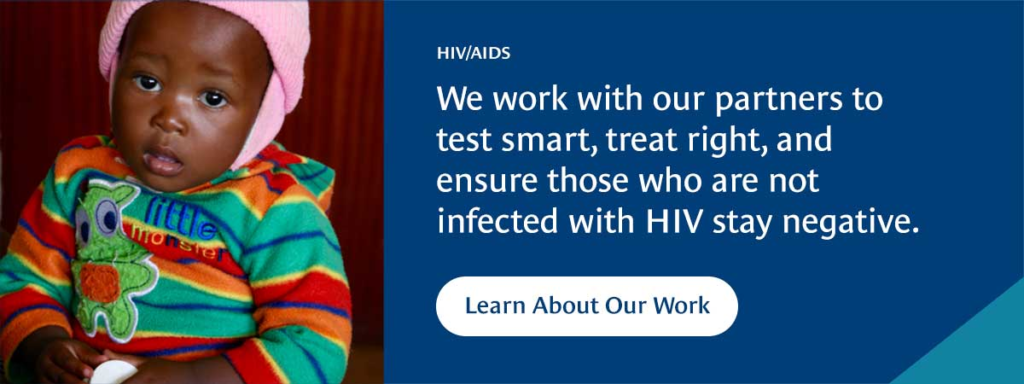Despite tremendous progress accelerating access to HIV treatment, approximately 1.5 million people were newly infected in 2020. To reduce the risk of HIV infection, the global community must continue to increase access to highly effective prevention tools, such as pre-exposure prophylaxis and voluntary medical male circumcision (VMMC)—one of the most cost-effective HIV prevention interventions available.
VMMC is a one-time procedure that reduces the risk of female-to-male HIV transmission by approximately 60 percent.[1][2][3] In 2007, the World Health Organization recommended increasing access to VMMC services in high-burden countries in Eastern and Southern Africa. However, uptake was initially slow, and many countries struggled to reach their VMMC program goals. In 2015, CHAI partnered with the Bill & Melinda Gates Foundation to support the rapid acceleration of VMMC access in Zambia and Zimbabwe, working closely with both ministries of health to support the management and coordination of their VMMC programs to increase program efficiency and impact.
Between 2014 and 2019, VMMCs in Zambia and Zimbabwe increased by 73 percent from 524,000 procedures to 905,000 procedures, compared to 19 percent in 15 priority countries within the East and Southern Africa region in the same period. This increase in uptake was driven in part by updated policies and guidance to inform resource prioritization, strengthened sub-national capacity to facilitate supply and demand of sub-national activities, and improved monitoring and evaluation systems with age-disaggregated indicators to inform evidence-based decision making.
Nearly 4 million men and adolescent boys accessed VMMC services in Zambia and Zimbabwe between 2014 and 2019. Using mathematical modeling we estimate these VMMCs have averted 30,000 new HIV infections (both male and female) to date, and this is expected to grow to nearly 64,000 new infections averted by 2030. The benefits of VMMC are lifelong and accrue over time as adolescent boys and young men age into high-risk age groups, thus the impact on new infections will continue to grow significantly into future years.
Note: This brief and related case study evaluated data from 2014 to 2019 due to ongoing COVID-19-related interruptions to VMMC services. These ongoing disruptions risk derailing the progress made in continued VMMC scale-up and prevention of new HIV infections. It is imperative that COVID-19 mitigation strategies are implemented in a manner that supports the availability of HIV prevention services, including VMMC.
[1] Auvert B, Taljaard D, Lagarde E, et al. (Nov. 2005) Randomized, controlled intervention trial of male circumcision for reduction of HIV infection risk: The ANRS 1265 trial. PLoS Medicine; 2 (11):e298. Link
[2] Bailey RC, Moses S, Parker CB, et al. (Feb. 2007) Male circumcision for HIV prevention in young men in Kisumu, Kenya: a randomised controlled trial. The Lancet; 369:643-656. Link
[3] Gray, RH, Kigozi G, Serwadda D, et al. (Feb. 2007) Male circumcision for HIV prevention in men in Rakai, Uganda: a randomised trial. The Lancet; 369:657-666. Link






